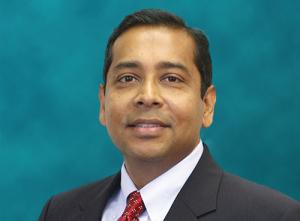We’re Innovating Relentlessly
Arshad Mansoor is SVP at EPRI.
PUF's Steve Mitnick: Arshad, what are EPRI's roles with respect to electrification and innovation?

Arshad Mansoor: I use the word "enabling." We enable the electricity sector to understand technology and how it benefits the customers — and how you integrate it with the grid.
We provide regulators, policymakers, and other stakeholders with data on benefits and costs, including a clear understanding of societal benefits. These include air quality improvement, safety, and grid flexibility that can balance variability from wind and solar.
We can enable manufacturers that are developing and innovating technologies to have a deeper understanding of how those technologies can be well integrated with the grid.
All of these require credible data on benefits, cost and utility integration methods. How does a technology perform in the real world?
We look forward — at technology that is coming down the pipe. Then we test and demonstrate those technologies, analyze and model to understand benefits, costs, and environmental impacts.
EPRI's role is not promoting electrification, but using solid science to objectively establish the value proposition from a customer perspective.
PUF: It sounds like this wave of electrification might be different than the first wave or two. This sounds like science, engineering, creativity, and innovation, all together.
Arshad Mansoor: You're right. I am reminded of what one of our board members, Sheryl Carter from NRDC, said. "Giving a two-hundred-watt free light bulb to your customers is not what electrification really means."
That's why we call it "efficient electrification" because electrification is expanding the opportunity for energy efficiency — but in a fuel-agnostic way.
It's important to integrate these technologies in a smart way. For example, innovative rate structures can enable customers to charge electric vehicles at a lower rate, but maybe at a different time - one that enables better grid operations.
Efficient electrification is very different than giving customers a light bulb. It's a very different value proposition — and nothing to do with load growth. This is about providing customers with the value in terms of cost, safety, air quality and the environment. It's also about inspiring the electricity sector to "lean forward."
PUF: In leading EPRI's electrification research and development, how and where do you prioritize?
Arshad Mansoor: We look at the technology spectrum in three buckets. One is transportation. There are tremendous opportunities and impacts with electrifying, not just passenger vehicles, but our off-road transportation.
Research focuses, not just on evaluating technology but smart-charging, electric vehicles, and charging infrastructure. We are approaching three hundred fifty kilowatts per charging station for fast charging. Enabling transportation is one of our key priorities.
The second bucket is heating and cooling. I think heat pumps are the next big thing — residential and commercial. I'll give you a big and important example. Stanford University replaced its campus combined heat and power system fueled by natural gas with a campus heat pump system powered from the utility grid.
We are working with manufacturers on the next-generation heat pump for residential use. We have a demonstration project that shows this next-generation heat pump can work at lower temperatures, be more efficient, and save more money, compared to today's heat pumps.
The third bucket includes emerging applications of electricity and those in their infancy. Among them, the electrification of agriculture, indoor and outdoor. We're also looking at things like 3-D printing and the impact of crypto-currencies. Bitcoin mining is an electricity-intensive process that is currently inefficient. But we'll make it efficient.
PUF: What drove you to say, "We really need to have an electrification conference. It's time?"
Arshad Mansoor: The primary objective is to convene the many different groups of stakeholders — including manufacturers, utilities, vendors, policymakers, the R&D community, academia, government, and most importantly - the customer, for discussions. And to show opportunities for efficient electrification.
For example, we'd like to bring in Amazon to talk about why they're electrifying all their warehouse forklift trucks. Or perhaps the Long Island Port Authority to say why they're electrifying the Long Island Seaport. Or bring in JFK airport and ask them why they have a multi-million-dollar project to electrify all the off-road transportation infrastructure in that airport.
We will create a venue not just to talk with each other within the electricity sector, but to demonstrate what everyone is doing and how it benefits customers. To showcase benefits and discuss cost-benefit and application opportunities — and challenges for accelerating the deployment of electrification.
I think the conference, the exposition, will be a success. No doubt. But that's only the first step. We are at the stage where we are improving, every day, the use of electricity as fuel — in the U.S., Europe, and many other places. It's becoming cleaner, and cleaner fuel can result in cleaner air. Cleaner fuel can also result in a cost-effective operation for customers.
It took a hundred years for electricity's share of energy use to get from zero to twenty percent, where we are today. We don't expect it to take another hundred years to go from twenty to forty percent.
PUF 2.0 Articles: We’re Innovating Relentlessly
Prioritizing Efficient Electrification R&D, Convening Stakeholders — By Steve Mitnick, with EPRI SVP Arshad Mansoor
Utilities’ Passion and Hard Work on EV Future — By Steve Mitnick, with EEI’s Lisa Wood and Becky Knox
Rural Power Designing the Future Too — By Steve Mitnick, with NRECA’s Keith Dennis
Future is Now in North Carolina — By NRECA’s Keith Dennis with NCEMC’s Lee Ragsdale and Diane Huis



